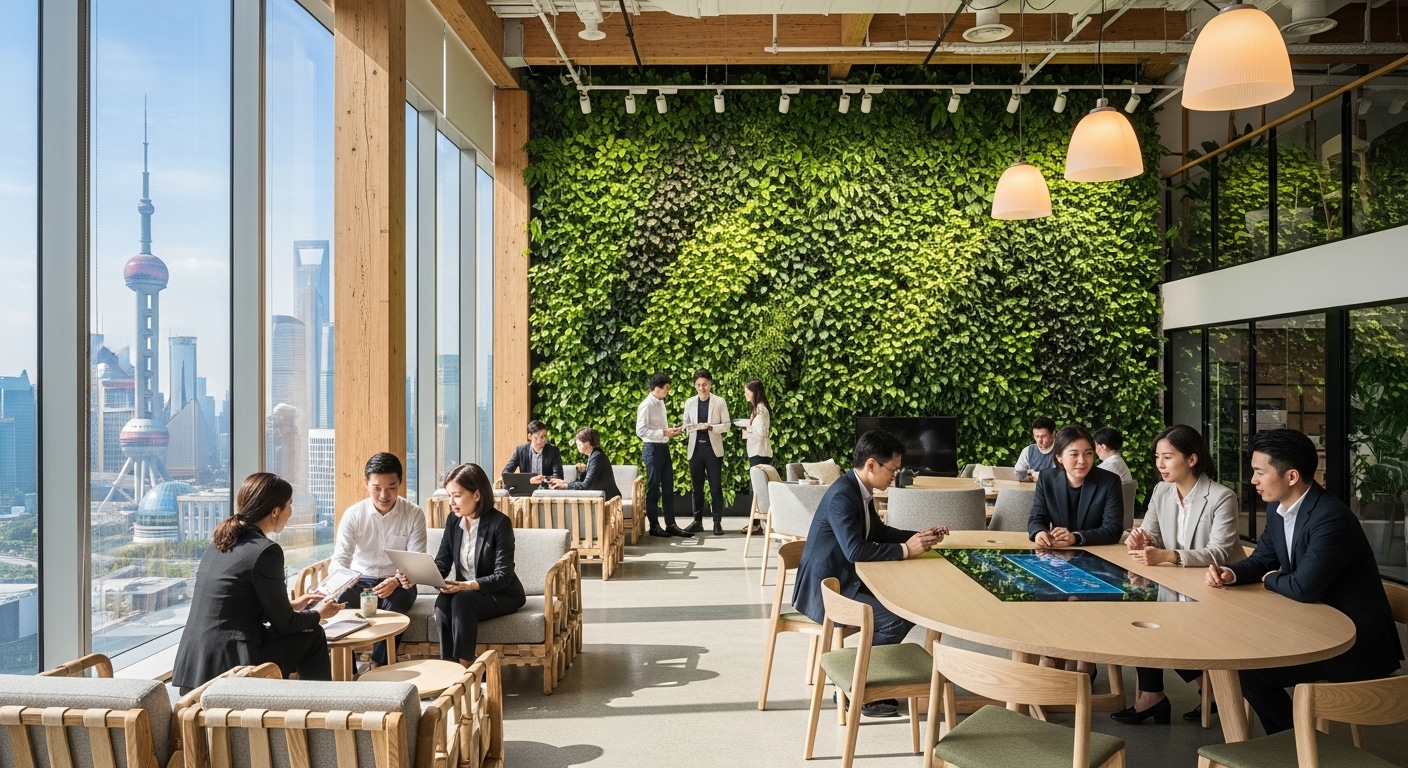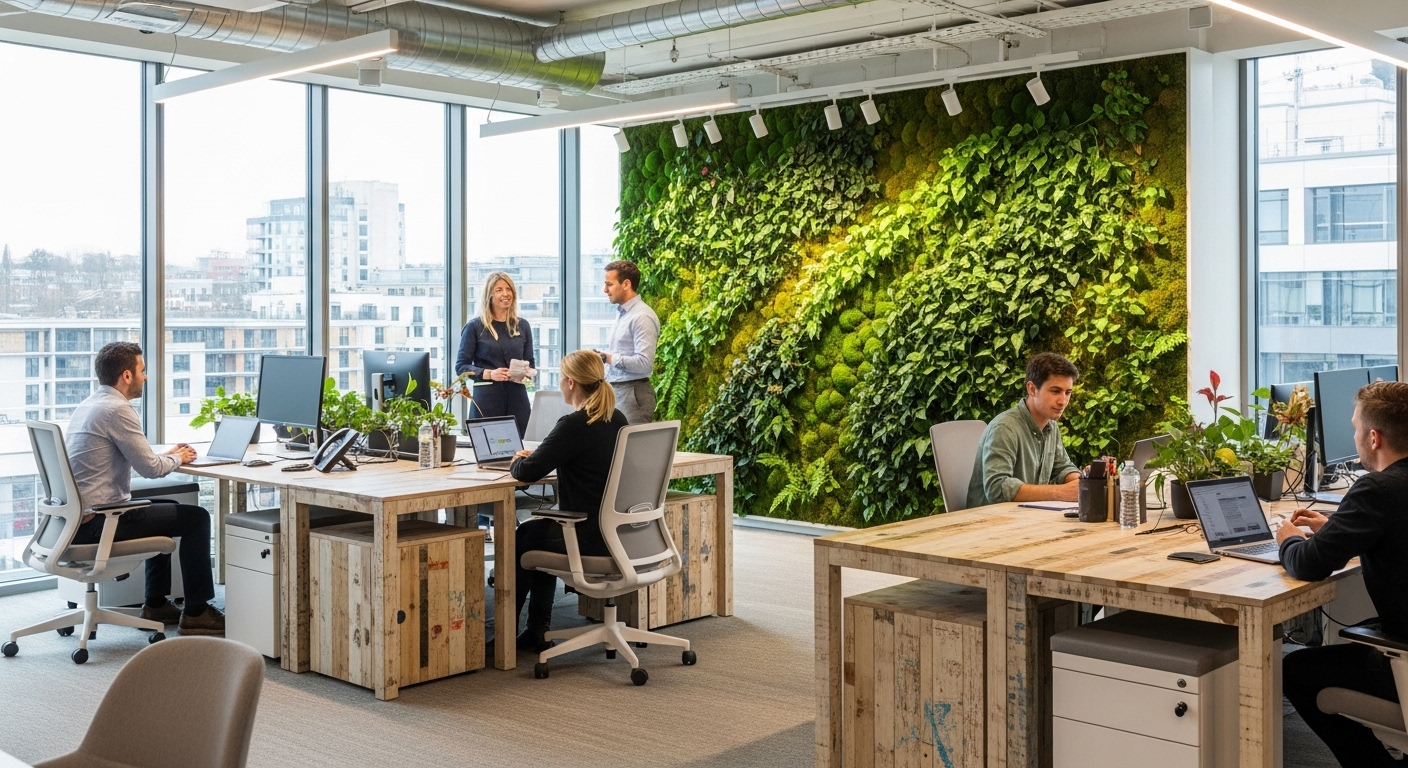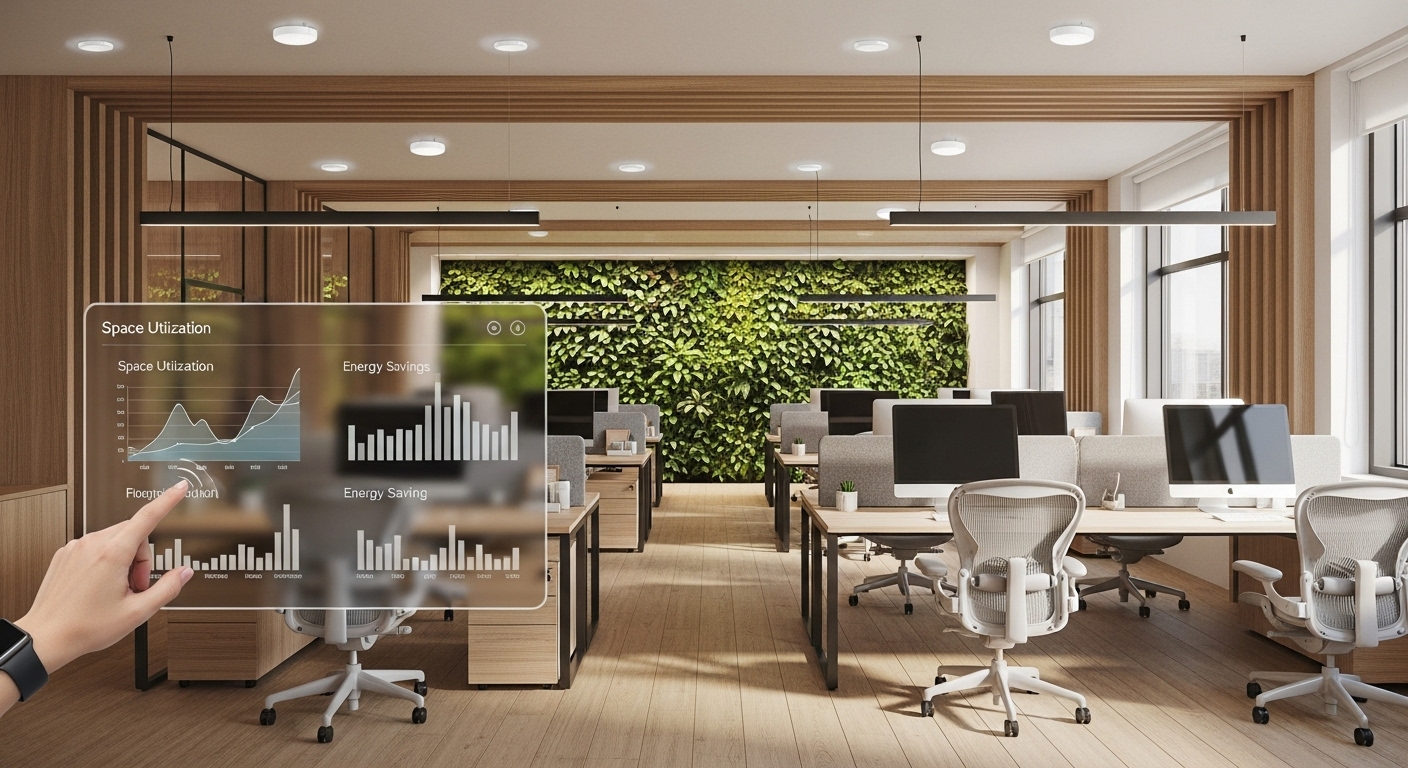In the global race towards a sustainable future, the modern workspace has become a critical battleground. No longer a mere footnote in a corporate social responsibility report, the design and operation of our offices are now central to business strategy. This shift is about more than just reducing carbon footprints; it’s about unlocking the ‘sustainability dividend’—a tangible return on investment measured in financial performance, employee well-being, and brand resilience. For business leaders, this represents a pivotal re-evaluation of commercial real estate from a cost center to a strategic asset. Nowhere is this transformation more apparent than in hyper-modern metropolises that are actively architecting the future. This article delves into the compelling financial and human case for embracing sustainable workspaces, exploring how this global trend is taking root and providing a competitive edge for companies that are forward-thinking enough to invest in a greener, more productive tomorrow.
Beyond the greenwash: understanding the new ROI of sustainability
For decades, the return on investment (ROI) for sustainable building practices was narrowly defined by utility savings. While reduced energy and water consumption remain significant benefits, the contemporary business case has expanded dramatically. The new ROI encompasses a ‘triple bottom line’ of people, planet, and profit, with each pillar reinforcing the others. Today’s metrics include tangible improvements in human capital, such as a measurable increase in employee productivity, lower rates of absenteeism due to healthier indoor environments, and significantly higher talent retention. Certifications like LEED (Leadership in Energy and Environmental Design) and the WELL Building Standard provide a clear framework for achieving and quantifying these benefits. For instance, studies have consistently shown that offices with improved ventilation and access to natural light can boost cognitive function scores by over 25%. This translates directly into better problem-solving, increased creativity, and higher-quality output. Furthermore, a strong, demonstrable commitment to sustainability enhances a company’s brand reputation, attracting not only top-tier talent but also a growing segment of environmentally conscious consumers and investors. This reputational capital is invaluable, providing a competitive moat in an increasingly crowded marketplace and de-risking the business against future regulatory changes and shifting market expectations.
The policy push: how government initiatives are shaping green real estate
The transition to sustainable workspaces is not happening in a vacuum; it is being actively accelerated by robust government policy. Globally, nations are setting ambitious climate targets, and these high-level commitments are cascading down into local building codes, financial incentives, and urban planning strategies. China’s national ‘dual carbon’ goals—to peak carbon emissions by 2030 and achieve carbon neutrality by 2060—have created a powerful top-down impetus for green transformation. As a global hub for finance and innovation, Shanghai is at the vanguard of this movement, implementing municipal-level policies that directly encourage sustainable development. These initiatives range from tax rebates and expedited permitting for developers of certified green buildings to direct subsidies for companies investing in energy-efficient retrofits. The city’s stringent building codes now mandate higher levels of energy efficiency and the use of sustainable materials in new constructions. This proactive policy environment fundamentally alters the financial calculus for businesses, making the adoption of green practices not just ethically sound but economically astute. It creates a clear pathway for companies to align their real estate strategy with national objectives, unlocking financial benefits while contributing to a larger collective goal.
Winning the war for talent: why the next generation demands sustainable workplaces
In today’s competitive labor market, the battle for top talent is fierce, and the workplace itself has become a key differentiator. For Millennial and Gen Z professionals, who will soon constitute the majority of the workforce, a company’s environmental and social values are not a perk but a prerequisite. A sustainable office is the most tangible and visible manifestation of these values. It demonstrates a genuine commitment to employee well-being and planetary health that goes far beyond words on a mission statement. A workspace designed with features like superior indoor air quality, ample natural light, non-toxic materials, and biophilic elements sends a powerful message: this company invests in its people. Research from firms like JLL and CBRE consistently finds that a significant majority of younger employees are more likely to work for a company with a strong environmental agenda. They actively seek employers whose values mirror their own, and a green-certified, health-focused office can be a deciding factor in accepting a job offer. In essence, the sustainable workspace has evolved into a critical tool for talent acquisition and retention, helping companies attract, engage, and keep the innovative minds needed to thrive.
Biophilic design in practice: integrating nature for peak performance
Biophilic design is a core component of the modern sustainable workspace, founded on the principle of humanity’s innate connection to nature. It involves much more than placing a few potted plants around the office; it is a holistic design philosophy aimed at integrating natural elements and processes into the built environment. This can manifest in various forms: living walls that naturally purify the air, the use of natural materials like wood and stone, water features that provide soothing ambient sounds, and architectural designs that maximize natural light and views of the outdoors. The benefits are profound and well-documented. Exposure to nature, even in simulated forms, has been shown to reduce stress, lower blood pressure, and improve mood. From a cognitive perspective, biophilic elements help restore attention, enhance creativity, and boost overall mental clarity. In a high-pressure urban environment, a biophilic office serves as an oasis, offering moments of respite that combat mental fatigue and prevent burnout. For businesses, this translates into a more resilient, engaged, and innovative workforce. As companies look to create environments that foster deep work and collaboration, biophilic design offers a powerful, evidence-based solution for enhancing human performance and well-being.
The intelligent core: leveraging smart technology for efficiency and well-being
The truly sustainable workspace is also a smart one. The convergence of green design and advanced technology is creating intelligent buildings that can optimize their performance in real-time. This is achieved through a network of Internet of Things (IoT) sensors that constantly monitor environmental conditions and occupancy patterns. This data feeds into a central building management system that can dynamically adjust lighting, heating, ventilation, and air conditioning (HVAC) to match the exact needs of the space at any given moment. This not only slashes energy consumption by eliminating waste but also creates a more comfortable and responsive environment for occupants. For example, sensors can detect CO2 levels and automatically increase fresh air circulation to maintain optimal cognitive function. Smart lighting systems can mimic natural daylight patterns, supporting circadian rhythms and improving employee alertness. The data analytics derived from these systems are invaluable for continuous improvement. Facility managers can identify underutilized areas to reconfigure layouts or pinpoint equipment that is operating inefficiently. This data-driven approach is particularly effective in dynamic business hubs like Shanghai, where efficiency and innovation are paramount. Smart building technology transforms the workspace from a static structure into a living ecosystem that actively supports sustainability and human health.
The circular economy model: from construction to daily operations
A truly holistic approach to sustainability extends beyond energy efficiency to embrace the principles of the circular economy. This model seeks to eliminate waste and keep materials in use for as long as possible, moving away from the traditional linear ‘take-make-dispose’ system. In the context of a workspace, this begins with the selection of materials for construction and fit-outs. It means prioritizing recycled, reclaimed, and rapidly renewable materials, and choosing products that are designed for disassembly and reuse at the end of their life. This ‘cradle-to-cradle’ approach minimizes the environmental impact of the physical office from day one. In daily operations, the circular model is reflected in comprehensive waste management programs that go beyond basic recycling to include composting of organic waste and partnerships for repurposing old furniture and electronics. It encourages a shift in procurement, favoring suppliers with sustainable practices and products with minimal packaging. Adopting a circular economy model requires a fundamental shift in mindset, viewing waste not as a byproduct but as a resource. It represents the deepest level of commitment to sustainability, creating a workspace that is not only efficient in its operation but also regenerative by design, significantly reducing its lifecycle impact on the planet.
The evidence is clear: the sustainable workspace is no longer a niche concept but a business imperative. The ‘sustainability dividend’ it delivers is a powerful combination of lower operational costs, enhanced brand equity, a distinct advantage in the war for talent, and a measurable boost in employee productivity and well-being. This is not about choosing between profit and purpose; it’s about recognizing that they are now inextricably linked. Driven by a confluence of government policy, technological innovation, and shifting workforce expectations, green buildings have evolved from a ‘nice-to-have’ feature to a cornerstone of modern corporate strategy. For businesses operating in a global innovation center like Shanghai, which is rapidly defining the future of urban development, ignoring this shift is not an option. Investing in a sustainable workspace is an investment in resilience, a commitment to your people, and a strategic move that will pay dividends long into the future. It is the definitive way to build an organization that is not only successful but also sustainable in every sense of the word.





